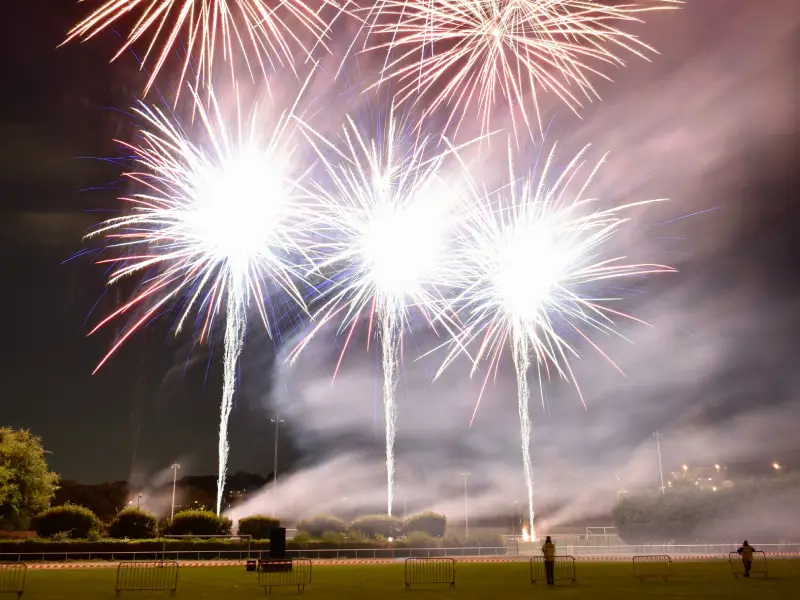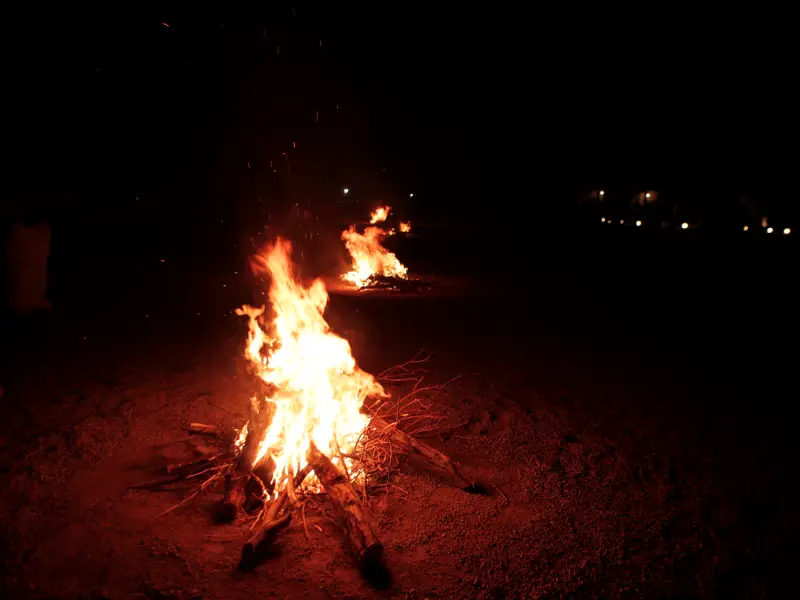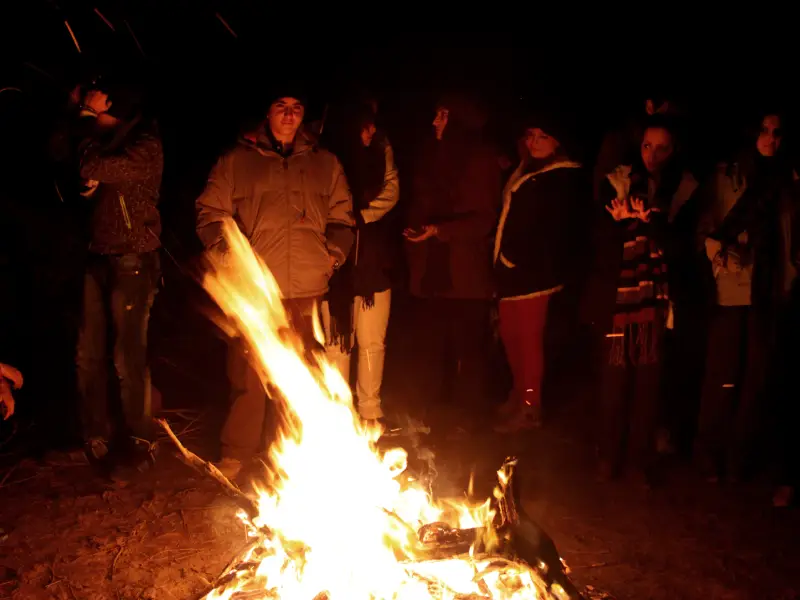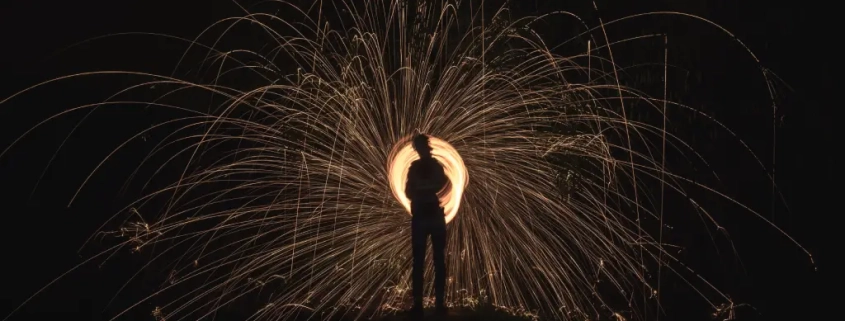Chaharshanbe Suri in Iran (History, Photos, Date)
Chaharshanbe Suri, also referred to as the Festival of Fire, is a lively and ancient Iranian celebration that occurs on the night before the final Wednesday leading up to the Persian New Year, Nowruz. Rooted in Zoroastrian traditions, Chaharshanbe Suri has been a significant part of Iranian culture for thousands of years, serving as a symbol of the victory of light over darkness and the triumph of good over evil.
With a history dating back thousands of years, Chaharshanbe Suri transcends time and space, connecting modern-day Iranians with their ancestors’ beliefs and the profound symbolism of light and fire. This article delves into the origins, customs, and profound meaning behind Chaharshanbe Suri, exploring how this enchanting Festival of Fire has evolved over the ages and continues to burn brightly, uniting communities and kindling hope for a brighter future.
Chaharshanbe Suri History
The origins of Chaharshanbe Suri can be traced back to ancient Zoroastrian practices, which were prominent in pre-Islamic Iran. Zoroastrianism, one of the world’s oldest monotheistic religions, revered fire as a sacred element representing purity, warmth, and wisdom.
The reverence for fire is deeply entrenched in Persian culture, and Chaharshanbe Suri is a testament to this historical connection.

The name “Chaharshanbe Suri” itself hints at the significance of fire in the festival. “Chaharshanbe” translates to Wednesday in Persian, and “Suri” refers to a red-colored material that people ignite to make bonfires.
The event is commonly observed on the last Tuesday night of the year, just before the vernal equinox marks the arrival of Nowruz, the Persian New Year.
The Evolution of Chaharshanbe Suri
As with many ancient traditions, Chaharshanbe Suri has evolved and may have adapted to modern times. While the core customs and beliefs remain unchanged, the way people celebrate the Chaharshanbe Soori festival has undergone some transformations.
Today, the festival has transcended its Zoroastrian origins and become an essential cultural event for Iranians of all backgrounds, regardless of their religious beliefs.

In recent years, the Iranian government has made efforts to promote and preserve Chaharshanbe Suri as a part of the nation’s cultural heritage. They encourage public gatherings and organize festivities in various cities across the country to maintain the spirit of unity and solidarity.
What do Iranians do on Chaharshanbe Suri?
On Chaharshanbe Suri, Iranians celebrate the Festival of Fire by lighting bonfires in open spaces and taking part in the symbolic act of “jumping over the fire.”
People form lines and leap over the flames while reciting traditional rhymes, believing that this ritual cleanses them of negativity and brings prosperity for the upcoming year.

Another significant tradition is the preparation and sharing of “samanu,” a sweet pudding made from sprouted wheat, symbolizing renewal and fertility.
Children and youngsters may also go door-to-door to make noise with objects and receive treats or coins in return. Chaharshanbe Suri fosters community spirit, family gatherings, and public festivities, all coming together to celebrate the triumph of light over darkness and the promise of a brighter future as the Persian New Year approaches.
Samanu Sharing in Chaharshanbe Suri
Samanu sharing is an important and delightful tradition during Chaharshanbe Suri. Samanu is a sweet and nutritious pudding made from sprouted wheat, and it holds significant cultural and symbolic value for Iranians.
Preparation of Samanu typically begins a few days before Chaharshanbe Suri. Wheat grains are soaked and allowed to sprout for several days, resulting in a sweet and tender sprouted wheat called “sabzeh.”
The sabzeh is then ground into a paste and cooked with water, sugar, and sometimes spices like saffron and cardamom to create a delicious and creamy samanu.

On the day of Chaharshanbe Suri, families, and communities prepare large quantities of samanu to share with others. People bring their samanu bowls to the gathering places where the festival is celebrated, such as parks or open spaces. They distribute the samanu among family members, friends, and even strangers as an act of kindness and unity.
Sharing samanu during Chaharshanbe Suri is a symbol of generosity, love, and community spirit. It reflects the Iranian culture’s emphasis on hospitality and coming together to celebrate and cherish shared traditions. Through this sweet offering, Iranians wish each other happiness, prosperity, and a year filled with sweetness and joy.
Ghashogh Zani in Chaharshanbe Suri
Ghashogh Zani, also known as “kicking the pot” or “spoon banging,” is another interesting and playful tradition associated with Chaharshanbe Suri in Iran. While not as widely practiced as fire-jumping or samanu sharing, it is observed in some regions and adds a unique element to the festivities.
During Ghashogh Zani, people take empty pots, pans, or containers, and with spoons or sticks, they make noise by hitting them together. The collective cacophony of banging and clanging creates a vibrant and lively atmosphere.

The sound of Ghashogh Zani is believed to drive away the evil spirits and bad luck associated with the passing year, clearing the way for a fresh start in the upcoming year.
This tradition can be seen as a symbolic act of cleansing and purification, aligning with the overall theme of Chaharshanbe Suri. The loud noises are meant to bring joy and excitement to the celebration, making it a memorable and fun-filled occasion for participants and onlookers alike.
Kuze Shekani in Chaharshanbe Suri
Kuze Shekani, also known as ” Smashing the Pot,” is another traditional custom observed during Chaharshanbe Suri in Iran. Similar to Ghashogh Zani, Kuze Shekani is not as widespread as fire-jumping but is practiced in some regions of the country, adding to the festivities of the Festival of Fire.
During Kuze Shekani, people prepare earthenware dishes, pots, or jugs and fill them with symbolic items representing negativity, such as written wishes for bad luck, illness, or misfortune.

These items may also include symbols of enemies or things people want to remove from their lives. At the peak of the celebration, the filled earthenware is thrown onto the ground, smashing it into pieces, signifying the destruction of negative elements and the cleansing of the spirit.
The act of breaking the earthenware is considered a symbolic gesture of getting rid of the past year’s bad luck and negativity, creating space for new beginnings and positive energy in the upcoming year. This custom is aligned with the overall theme of purification and renewal during Chaharshanbe Suri.
Shaal-Andazi
The Shaal-Andazi ritual is one of the forgotten customs, even though it is still preserved in some parts of Iran, such as Hamadan and Zanjan.
This custom is held in such a way that the young people would make a long colorful rope by tying several silk handkerchiefs together, and then throw one end of this cloth rope through the chimney opening into the neighbor’s house and announce their presence to the owner with a few loud coughs.

Upon seeing this colored rope, the owner of the house puts the things that he had prepared as a gift for Chaharshanbe Suri in advance in the corner of the Shaal (handkerchief) and ties it, and tells the owner of the shawl with a gentle wave to pull the shawl up.
This gift was also an omen for the owner of the shawl; In this sense, bread was a sign of blessing, sweets were a sign of happiness and sweetness, and pomegranates were a sign of blessing.
In addition, taking hazelnuts and almonds was interpreted as perseverance against problems, walnuts as a symbol of longevity, silver coins as a symbol of good luck or courtship intentions, and raisins as a symbol of a fruitful New Year.
Why do People Celebrate Chaharshanbe Suri?
Chaharshanbe Suri is celebrated for its deep-rooted historical significance in Zoroastrian traditions, symbolizing the reverence for fire as a sacred element and the triumph of light over darkness.
It provides a unique opportunity for Iranians to connect with their ancient heritage and preserve their cultural identity. The act of jumping over the fire represents a powerful ritual of purification and renewal, allowing individuals to leave behind the negativity of the past year and embrace hope and prosperity for the year ahead.

Beyond its spiritual and cultural aspects, Fire Festival in Iran serves as a joyous occasion for community bonding and family gatherings.
People come together in open spaces to share in the festivities, strengthening social ties and fostering a sense of unity and togetherness.
The celebration’s vibrant and lively atmosphere, accompanied by music, dancing, and the sharing of traditional treats like samanu, adds to the spirit of joy and anticipation as Iranians prepare to welcome the New Year with hope and positivity.
What does Chaharshanbe Suri Symbolize?
Chaharshanbe Suri is steeped in symbolism, representing the core values of Iranian culture and beliefs. The festival’s main symbol is fire, signifying purity, enlightenment, and the triumph of light over darkness.
Jumping over the bonfires is a powerful ritual of purification, symbolizing the cleansing of the past year’s negativity and the embrace of hope and prosperity for the future.
As Chaharshanbe Suri falls on the cusp of spring, it also symbolizes renewal and rebirth, mirroring the rejuvenation of nature during this time of year.

Beyond its spiritual connotations, Chaharshanbe Suri embodies community and cultural unity. Iranians of all backgrounds come together to celebrate the festival, forging strong social bonds and reinforcing their shared heritage.
The collective participation in fire-jumping and other customs creates a sense of togetherness, highlighting the festival’s role as a symbol of communal harmony. Overall, Chaharshanbe Suri holds profound significance in Iranian hearts, symbolizing purification, hope, renewal, and the enduring strength of their cultural identity.
Safety Tips for Chaharshanbe Suri in Iran
Fire Safety
Chaharshanbe Suri involves lighting bonfires and jumping over flames. While this is a cherished tradition, it’s essential to exercise caution and follow safety guidelines. Avoid wearing loose clothing that could catch fire, and maintain a safe distance from the bonfires to prevent accidents.
Respect Local Customs
To show respect during festivals, it’s important to learn about local customs and traditions. Remember to ask for permission before taking pictures of people or cultural activities.
Be Cautious with Fireworks
Fireworks are often part of the festivities during Chaharshanbe Suri. If you encounter fireworks displays, maintain a safe distance and avoid handling them yourself to prevent accidents.
Chaharshanbe Suri 2026 Date
Chaharshanbe Soori’s date 2026 will be the 17th of March. In 2026, the festival promises to be a magnificent spectacle as communities gather around bonfires, leaping over the flames while chanting ancient rituals to ward off evil spirits and bring luck for the upcoming year.
The night sky will illuminate with vibrant fireworks, painting a mesmerizing canvas of colors that reflect the joyous spirit of the occasion.

Families and friends will join together to exchange heartfelt wishes, indulge in delicious feasts, and dance to traditional music, enveloping the air with an infectious sense of excitement and unity.
Chaharshanbe Suri 2026 will undoubtedly be a night to remember, filled with laughter, warmth, and a sense of renewal as the new year approaches.
Best Time to Visit Iran for Chaharshanbe Suri
The best time to visit Iran for Chaharshanbe Suri is during the last week of March, specifically on the eve of the last Wednesday before Nowruz, the Persian New Year. Chaharshanbe Suri typically falls on this day, which is when the festival is celebrated with great enthusiasm and fervor throughout the country.
Final Word
Chaharshanbe Suri is an awe-inspiring and deeply rooted festival that showcases the enduring spirit of the Iranian people and their vibrant cultural heritage.
The act of leaping over flames and celebrating the Festival of Fire is a powerful reminder of the human spirit’s desire for renewal and the pursuit of light amidst the darkness.
As Iranians come together on the eve of the last Wednesday before Nowruz, they embrace their history, traditions, and the promise of a brighter future.
This ancient and magical festival continues to be a source of joy, unity, and hope, reminding the world of the richness of Persian culture and the enduring significance of fire as a symbol of life, wisdom, and transformation.
Chaharshanbe Suri, with its mesmerizing flames and lively customs, will undoubtedly remain a cherished part of Iran’s cultural identity for generations to come.
Are you planning to travel to Iran and looking for an Iran resort? Consider Matin abad eco resort.





Leave a Reply
Want to join the discussion?Feel free to contribute!